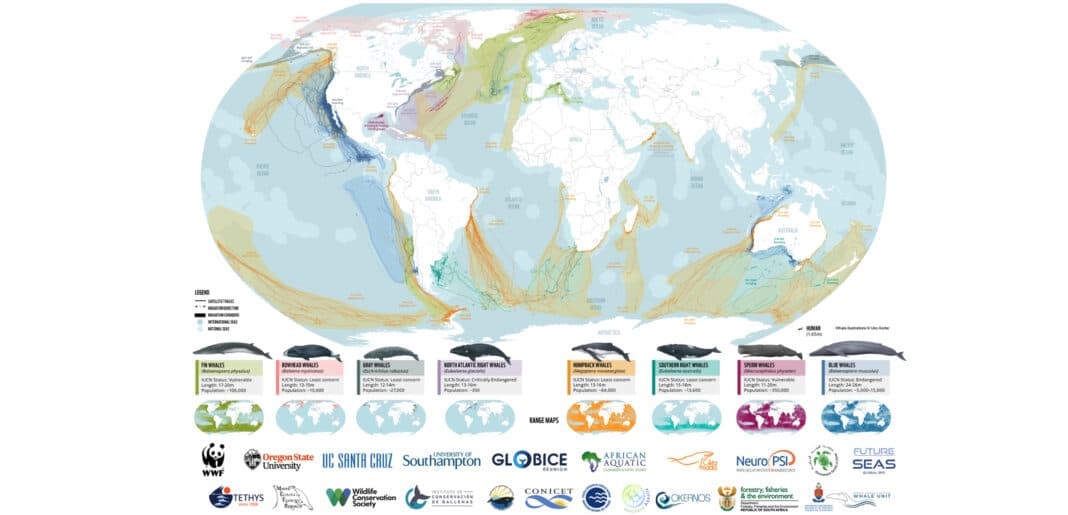The World Wildlife Fund and several partners have released a new report that gives the first truly comprehensive look at whale migrations and the threats they face across the oceans.
The report, “Protecting Blue Corridors,” highlights how the cumulative impacts from industrial fishing, ship strikes, pollution, habitat loss and climate change are creating a hazardous and sometimes fatal obstacle course for these huge marine species.
“Protecting Blue Corridors” visualizes the satellite tracks of over 1000 migratory whales worldwide. It outlines how whales are encountering multiple and growing threats in their critical ocean habitats — areas where they feed, mate, give birth, and nurse their young — and along their migration superhighways, or “blue corridors.”
According to Chris Johnson, global Lead for whale and dolphin conservation at WWF:
“Cumulative impacts from human activities — including industrial fishing, ship strikes, chemical, plastic and noise pollution, habitat loss, and climate change — are creating a hazardous and sometimes fatal obstacle course. The deadliest by far is entanglement in fishing gear — killing an estimated 300,000 whales, dolphins, and porpoises each year. What’s worse, this is happening from the Arctic to the Antarctic.”
The report comprises 30 years of scientific data contributed by more than 50 research groups, with leading marine scientists from Oregon State University, the University of California Santa Cruz, the University of Southampton and others.
Dr. Daniel Palacios of the Marine Mammal Institute at Oregon State University said:
“Contributing years of data from Oregon State’s satellite tracking studies, we see migrations across national and international waters creating conservation challenges for populations to recover.”
Check out the full report here.

